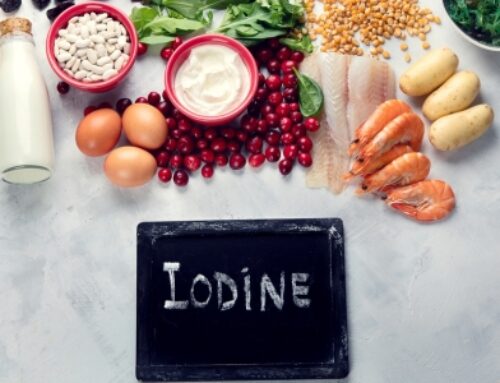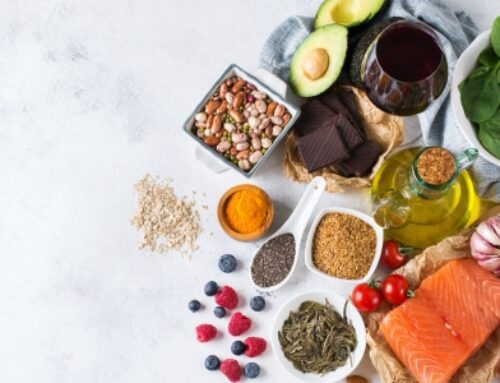
Whether you have been reading a nutrition label, shopping for supplements or thinking about adding a new member to your family, at some point in time you may have come across the words folate or folic acid. What is folate? What’s the difference between the two?
What is folate and folic acid?
Folate is also known as vitamin B9 and is a water soluble vitamin. Our bodies cannot make or store folate, so we must get folate from our diet. Folic acid is the synthetic form (man-made) of folate, usually found in supplements and fortified food products.
What are folate rich foods?
Folate can be found naturally in:
- Dark leafy green vegetables: spinach, asparagus and brussel sprouts.
- Citrus fruits: oranges.
- Nuts and legumes: peanuts, chickpeas, lentils and kidney beans.
- Dairy products.
- Meat, poultry and seafood products.
- Eggs.
Folic acid can commonly be found in:
- Whole grains: bread, flour and baked goods.
- Dietary supplements (multivitamins and prenatal vitamins).
What are the benefits of folate?
- Assist’s in the production of both DNA and RNA.
- Helps in the production of red blood cells.
- Assist’s in the metabolism of amino acids (protein).
- Aids in the production of energy.
- Assist’s in the development of the neural tube during early development.
- Research has indicated a beneficial role in cognitive function.
- Early research has suggested folate assists in the reduction of depression, heart disease and Alzheimer’s.
Am I getting enough?
According to the Australian nutrient reference values adults should be aiming for:
| Males | 400µg/day |
| Females | 400µg/day |
| During pregnancy | 600µg/day |
| During lactation | 500µg/day |
While most Australian’s are getting enough folate, certain groups are more at risk of folate deficiency. These groups at risk include:
- Women of childbearing age and pregnant women. If you’re thinking about having a baby then you need to know about folate! The best known role of folate is in the prevention of neural tube defects (NTD’s) in early development. Failure of the neural tube to close at both ends during 21 to 28 days after conception, can lead to malformations of the spine and brain. So it is important to think about folate early on!
- Medical conditions that impact malabsorption nutrients: Celiac disease, Crohns disease, Ulcerative Colitis.
Easy recipes to include folate rich foods in your diet:
[download id=”10468″]
1. Grilled Asparagus with Almonds, Feta and Mint

Ingredients (serves 2)
- juice of 1/2 lemon
- 2 tbsp. olive oil
- 1 bunch asparagus
- 60g low fat feta
- 4-5 leaves mint leaves, chopped
- ¼ cup flaked almonds
Method
- Grill the asparagus with olive oil, rotating the asparagus every minute or so and serve on a plate.
- Squeeze lemon juice over the asparagus and sprinkle with mint leaves, flaked almonds and feta.
- Serve and enjoy!
2. Yoghurt and Spinach Garlic Dip
This one is great for entertaining guests or for a mid-arvo snack with pita bread or whole-grain crackers. All you need is a blender!

Ingredients (serves 2)
- 1 garlic clove
- 200g baby spinach
- 1 cup low fat Greek yoghurt
Method
- Blend all ingredients together until smooth. Serve with crackers.
3. Fresh Orange Salad
A light, fun and fresh salad that is quick to pull together. It is so easy!

Ingredients (serves 2)
- 2 oranges, peeled, thinly sliced
- ½ onion, thinly sliced
- ¼ cup parsley, roughly chopped
- 4 cups baby spinach
- ½ 450g can baby beetroot, quartered
- 60g low fat feta cheese, crumbed
Method
- Combine all ingredients into a bowl and serve!
4. Spiced Baked Beans
A great winter breakfast favourite! This recipe is flavourful and can also be used as a dinner side dish.

Ingredients (serves 2)
- 1 tbsp. extra-virgin olive oil
- ½ small brown onion, roughly chopped
- 1 garlic clove, crushed
- ½ tsp. cumin powder
- ½ tsp. paprika
- ½ 400g can diced tomatoes
- 1 400g borlotti beans, drained and rinsed
- 1 tbsp. flat leaf parsley
Method
- Simply heat oil in a fry pan over medium heat. Add onion and cook until lightly golden. Add garlic, cumin and paprika.
- Stir and add the canned tomatoes and beans. Cook for an additional 5 minutes.
- Season with parsley, salt and pepper. Serve.
If you’d like further help with your nutrition please click below:



